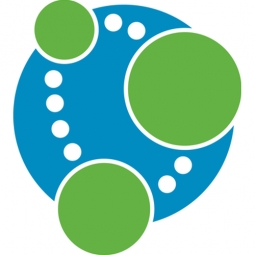Case Studies.
Add Case Study
Our Case Study database tracks 18,927 case studies in the global enterprise technology ecosystem.
Filters allow you to explore case studies quickly and efficiently.
Download Excel
Filters
-
(3)
- (3)
- (1)
-
(2)
- (2)
-
(2)
- (1)
- (1)
- (2)
- (1)
- (1)
- (1)
- (1)
- View all 7 Industries
- (2)
- (1)
- (1)
- (1)
- (2)
- (1)
- (1)
- (1)
- (1)
- View all 7 Use Cases
- (4)
- (1)
- (1)
- (1)
- (4)
Selected Filters

|
UBS Enhances Risk Management and Compliance with Neo4j Data Lineage Tool
UBS, a multinational investment bank and financial services company, was faced with the challenge of complying with regulations put in place to strengthen systems for risk data aggregation and internal risk reporting following the 2007 global financial crisis. Specifically, UBS needed to comply with the Basel Committee on Banking Supervision issued standard 239 (BCBS 239). This regulation required banks to provide transparency into the data flows that feed their risk reporting, necessitating broad data governance and detailed data lineage. Data lineage, which involves tracking the entire lifecycle of information, is a crucial component of risk management. UBS initially built an application called Group Data Dictionary (GDD) as its data lineage and data governance tool on Oracle. However, they soon discovered limitations with an RDBMS approach, which relies on JOINS to connect data across tables. UBS realized it needed a better solution for creating real-time data lineage visualizations and exporting lineage information for ad-hoc analysis via Excel.
|
|

|
Novartis Leverages IoT for Enhanced Drug Discovery
Novartis, a global healthcare company, was faced with the challenge of managing and making sense of a vast amount of data. The company had decades of data on how various compounds affect protein targets, with about a billion data points in total. This historical data was critical but sparse compared to the granular data currently being collected. Novartis uses an automated process that captures high-content image data showing how a particular compound has affected an entire cell culture, generating terabytes of phenotypic data. The challenge was to combine this historical data with the burgeoning phenotypic data and place it within the larger context of ongoing medical research from around the world. The team also wanted to combine its data with medical information from NIH’s PubMed, which contains about 25 million abstracts from some 5,600 scientific journals.
|
|

|
Leveraging Graph Technology for Enhanced Cybersecurity: A Case Study on MITRE's CyGraph
MITRE, a federally-funded, not-for-profit company that manages seven national research and development laboratories in the United States, was grappling with the challenge of managing an influx of cybersecurity data. The constant changes in network environments were impacting the security posture of U.S. government agencies. Intrusion alerts, anti-virus warnings, and seemingly benign events like logins, service connections, and file share access were all potentially associated with adversary activity. The cybersecurity researchers at MITRE needed to go beyond rudimentary assessments of security posture and attack response. This required merging isolated data into higher-level knowledge of network-wide attack vulnerabilities and mission readiness. The challenge was not the lack of information, but the ability to assemble disparate pieces of information into an overall analytic picture for situational awareness, optimal courses of action, and maintaining mission readiness. The team also struggled with fully comprehending a given security environment and mapping all known vulnerabilities.
|
|

|
Fortune 200 IT Services Company Boosts Customer Engagement with Real-Time Matching of Capabilities to Client Needs
The Fortune 200 IT Services Company, a global organization with 130,000 employees across 80 countries, was seeking new ways to differentiate its services in a crowded market. The company had an extensive back catalog of digital transformation projects, but had limited visibility of what they had delivered before. They wanted to exploit these projects more readily to win business. The challenge was to map and match their capabilities to what they were hearing from the client, and what the clients were saying in their strategy papers and company reports. They aimed to present the ideal recommendation and create the most effective transformation roadmap in real time, during client meetings.
|
|

